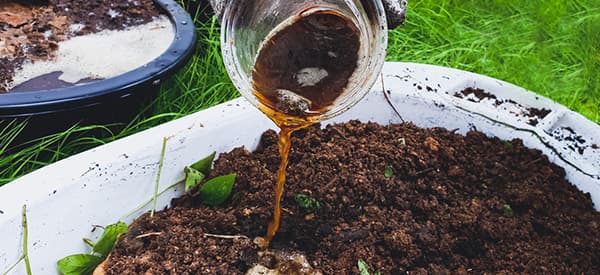
Weed Tea – Turning Unwanted Plants Into Fertilizer
There are some weeds that are more troublesome than others. Thistles and wild oats, for example, die off and break down easily in the compost, but others, such as some running grasses and vines, can be persistent little buggers and may resprout in the compost in milder climates and seasons.
This is where weed tea comes in handy because essentially you drown the unwanted plants first for 4 weeks, then they are harmless on your compost, no matter the season or climate. And not only do you solve your compost problem, but the water you drowned the weeds is a natural method for turning unwanted plants into fertilizer. Gardener 2: Weeds 0.
What Plants To Use In Weed Tea
Focus on collecting live, green vegetation, as this will break down quicker. Avoid leaves that are waxy or tough. I usually throw in kikuyu and couch grass as well as convolvulus, since they can take off in the compost if they aren’t thoroughly covered or lie exposed to the hot sun to bake on the top of the pile.
But as long as the vegetation is alive, then you really can use ANY plant.
Method for Turning Unwanted Plants Into Fertilizer
Cut or tear up the vegetation into approximately 5 – 10 cm pieces. The smaller you make the pieces, the quicker it breaks down and the more nutrients are released into the water.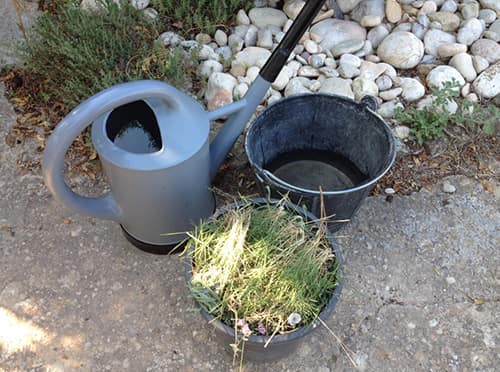
Place the vegetation in a normal pot that fits neatly inside a bucket. The pot will act as your strainer later.
With your pot of vegetation sitting in the bucket, fill the bucket with water.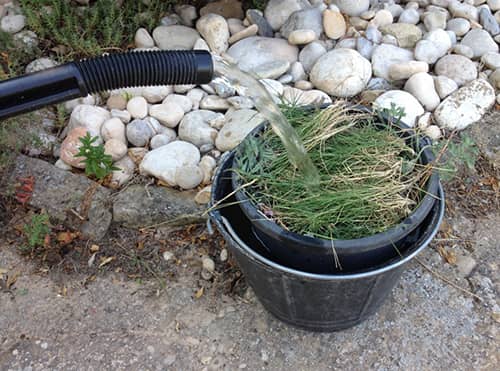
Place the lid on or cover it loosely to reduce odors and evaporation. You can cover it with a plastic bag, but I didn’t have one big enough this time, so I just used an old lid.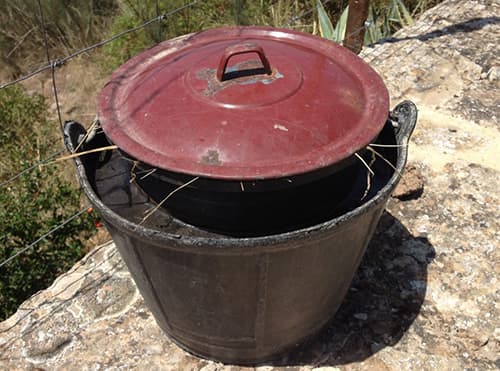
You can place the bucket in full sun to speed up the process. You may need to top up the water about once a week or so, depending on how airtight your bucket is and how hot it gets.
After 25 – 30 days, the weeds have degraded and are completely dead, while many of the nutrients have been released into the water, especially the water-soluble ones. The remaining cellulose and plant matter can be strained off by simply lifting out the pot and throwing its contents on the compost without the risk of re-sprouting. It’s a win-win situation – except for the weeds!
⇒ People Weed Out These Plants, But Here’s What You Should Do Instead
Application
Weed tea should ALWAYS be diluted, even on “hungry” plants. Just like essential oil is good for us, we still need to dilute it to use it safely. The same goes with weed tea.
As a very rough guide, I try to aim for about 1 part weed tea diluted with 100 parts water. This equates to about 5 tablespoons of weed tea per 8 liters of water. This is based on the average NPK being about 3-7-4. I know others recommend a dilution rate of 1-part tea to only 10-parts water, but I feel like this is too strong, especially in a root-bound pot where there is very little dead organic matter left in the soil and the potential for leaching is greater.
I personally use weed tea on my pots, especially the ones that are getting a bit cramped and are struggling because I didn’t plant them in the ground before it got too hot. You know the ones; the pots where you can’t add any compost to the top because they are bursting already.
⇒ Pressurized Rainwater Harvesting and Purification System
I also like to use weed tea on my veggies when they start flowering and again when they finish flowering, since I know that the weeds I’m using don’t contain any insecticides or herbicides. If you have doubts about any residues from pesticides, then don’t use it on any plants you intend to eat, use it on your other plants instead.
When it comes to raised beds and larger containers, I personally wouldn’t bother with weed tea. You will have a better outcome by throwing a layer of mature compost (or wood chips) around these areas since this will not only give you NPK, but also add organic matter which will retain moisture better, and potentially increase your soil pH. And you can add all the extra microbes and bacteria that you want to your soil, but without the addition of extra organic matter as well, they essentially starve to death.
You can technically use your weed tea anywhere, but unlike compost and wood chips, the nutrients present in weed tea are only temporary; those that aren’t taken up by the roots will eventually leach out of the pot, and potentially end up in our waterways. So don’t be too heavy handed when dishing out your diluted weed tea and only fertilize when it’s necessary.
Fair Warning
By the second week, this stuff stinks. Essentially you are rotting down vegetation in the water, making an anaerobic reaction, which means a very strong smell of sulfur, a.k.a rotten egg. For this reason, many people in small gardens use a bucket with a lid to reduce the smell, but if this is the case, you will have to pop the lid every day or so to release the gas that is being created by the bacteria and other microbes, just like you would when fermenting vegetables.
Other than the smell, the only other downside about making your own weed tea fertilizer is that you don’t know what your NPK ratios are. Of course, you can buy at-home test kits which can give you a rough estimate, but take these with a grain of salt. One study showed that the NPK ratios, when averaged and rounded up, are about 3-7-4, with nitrogen being the biggest variable.








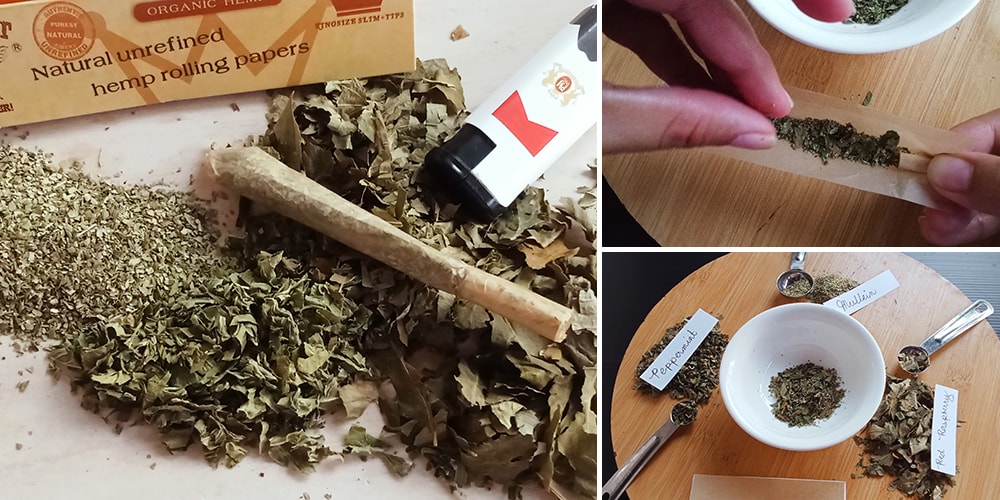
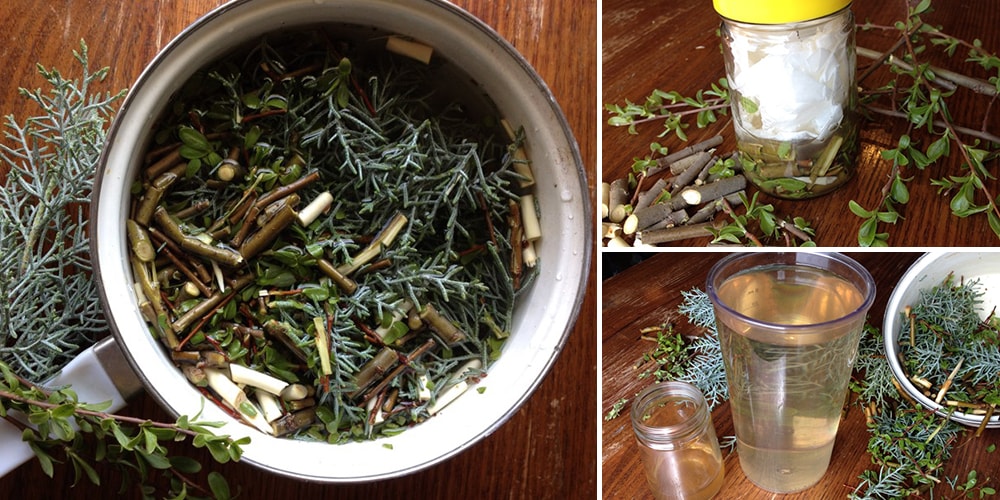

Thanks! This was good info!
Hi Anand,
Thank you for your comment! We are happy to hear you appreciate the article.
Many blessings and good health!
Very interesting! I appreciate learning about this. My concern is mosquito larvae; I guess I need to find a lid to tightly cover the whole contraption and not just the inner pot.
Hi Allen thank you for sharing I’m also motivated
I have your book and such and finally becoming motivated. I have a crazy weed do I think and I don’t know what it is…I let it grow this year. Can you help me?
Hi Tina,
Thank you for supporting our work! The plants should be identified in their environment, by looking at all their parts (leaves, flowers, color, root).
There are also some useful apps out there to help you identify plants but it is best to double-check the result.
Many blessings and good health!
It’s about time someone wrote a post about weed tea. When I was a child I remember my Mom giving her ivy plant left over tea and the plant thrived. Now I use left over tea bags and any herbs I have that over past their prime and use it for garden and house plants. Thank you confirming my Mom’s teaching me this.
My website is going to get a reno this month so will not be available for a while. I do have a blog on FB if you would like to ask me anything just go to facebook.com/helpful-herbal.com/blog
Hi Shelagh,
Thank you for taking the time to share this with us! Using tea bags in compost is a great method. Tea bags are added to the compost as a nitrogen-rich component, balancing the carbon-rich elements.
Many blessings and good health!
I’ve been doing this for quite a while now. I started 75‘ x 5‘ x 18“ of raised beds this year. With a native soil and Pete moss mix at a 2 to 1 ratio. I also used about 8 inches of salvaged brush from my local forest as a base. I then took this weed tea mix. And made multiple applications to the soil turning it in each time to give me a nutrient base that wouldn’t of been there naturally. It worked well. I expect the second year to be even better. I’ll be adding more during the fall.
Hi Swhabby,
Thank you for sharing your experience with us! We are glad to hear weed tea worked so well for you.
Many blessings and good health!
Thank you!!! My Georgia garden and property tend to be overrun with chamber bitters and that seems like a good solution for the excess
I’m delighted to read this article.. I was inspired last year by an online permaculture practitioner/blogger to make weed tea. We are on 30 acres, so we have plenty of weed material.. I was warned that it would get very smelly due to anaerobic activity, but I wasn’t expecting it to get un-smelly with time. Can you shed any light on that, please? It really was rank, and then it became almost water-like in terms of no particular smell.
I also didn’t realise initially just how tiny the ratio of tea to water was going to be, so imagine my surprise when my 120 litre (roughly 30 gallons) OTTO bin was full and I only eked out a few tablespoonfuls here and there 😀 Having so many weeds to tea-compost we’d been quite excited and drilled a hole down the bottom of the 120 litre and pushed a plastic bung type tap in …. I made a huge ‘tea bag’ out of shade cloth so that once the tea was well fermented we could just lift that (very heavy :-o) sack of soggy weed remains out to drain, and then used the tap straight into smaller watering cans almost full of water to fertilise the plants.